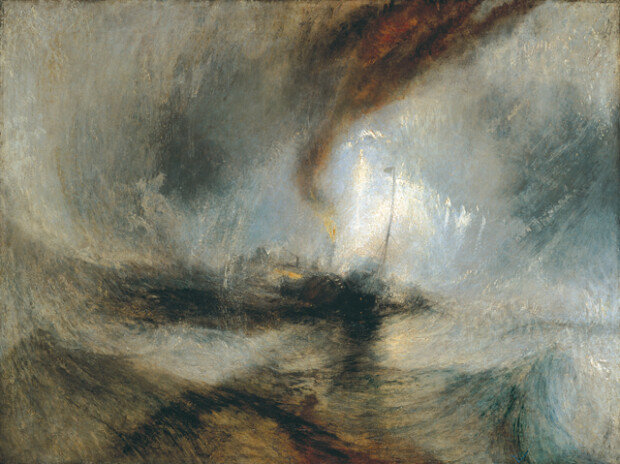A will stronger than a storm
A will stronger than a storm
Posted August. 02, 2018 07:09,
Updated August. 02, 2018 07:09

A small steamboat wavers dangerously on the sea engulfed in a snow storm. The artist captures the urgent moment where gusty winds and waves appear to swallow the boat with rough and swift brushstrokes. The painting was drawn by William Turner, the much-loved British painter, in his later years. How did Turner capture the dynamic moment of the boat caught in a snow storm?
Turner, who was born into a modest family as a son of a barber, showed natural talent in art since he was a child. At the age of fifteen, he participated in an exhibition held by the British Royal Academy of Art. He was appointed as associate member of the institute at 24 and worked as a professor when he became 32. He was acknowledged early in his career as an artist and was honored greatly. However, he was faced with sharp criticism when he displayed this painting in 1842, as Turner’s description of a snowstorm, which people at that time viewed as ambiguous in shape, was considered shocking by viewers, who were accustomed to realistic landscapes. John Rusckin, a young critic at that time, thought differently and praised the painting in his book Modern Painters in 1843, as “the movement of the sea, fog and light being the most magnificent of any piece of work on canvas.” In fact, the painter drew the painting based on his own shipwreck experience. Turner replied to his critics.
“This painting was not made to be understood, but to show what the situation was like at that time. I had sailors tie me to the mast to observe the storm and I had absolutely no hope of survival for four hours. But at the same time, I was thrilled that I had a chance to record that situation.”
Turner was 67 at that time. Even in a desperate situation where his life was threatened, he was clearly aware of his duty as an artist. Turner’s painting continues to inspire us to this day, because it is the outcome of ceaseless challenge, experimenting and refusing to stay complacent.







